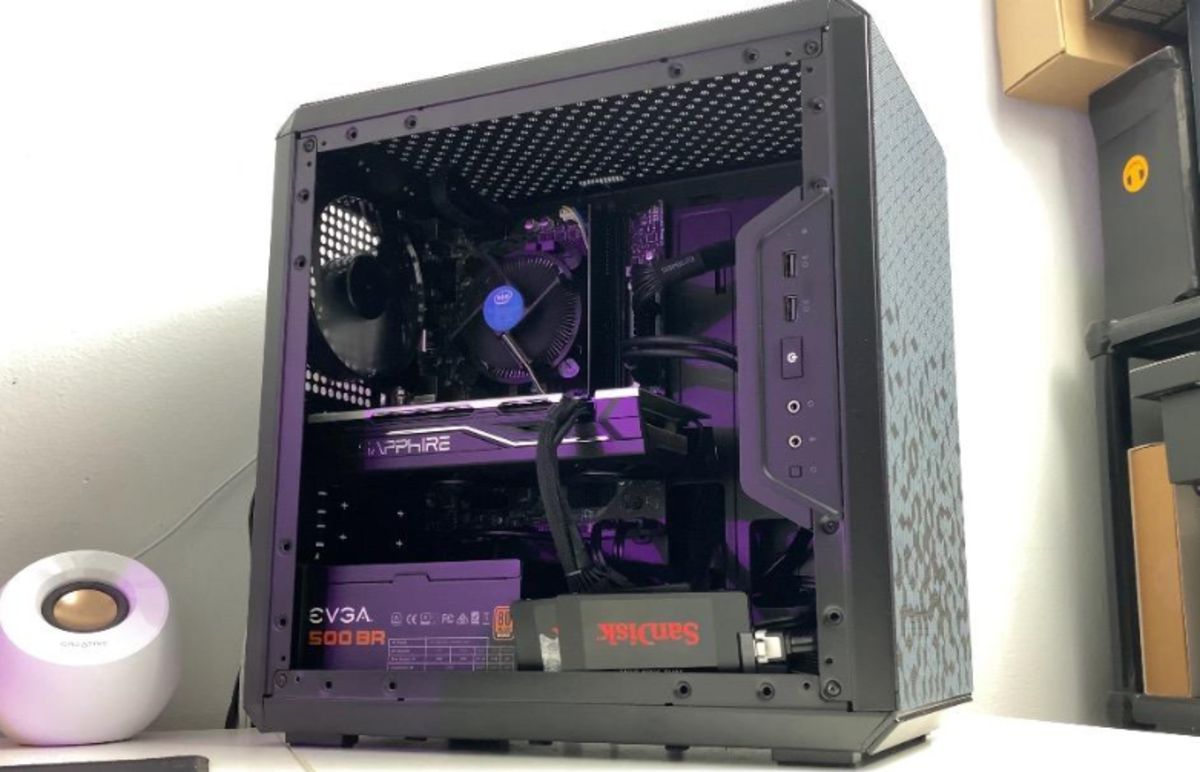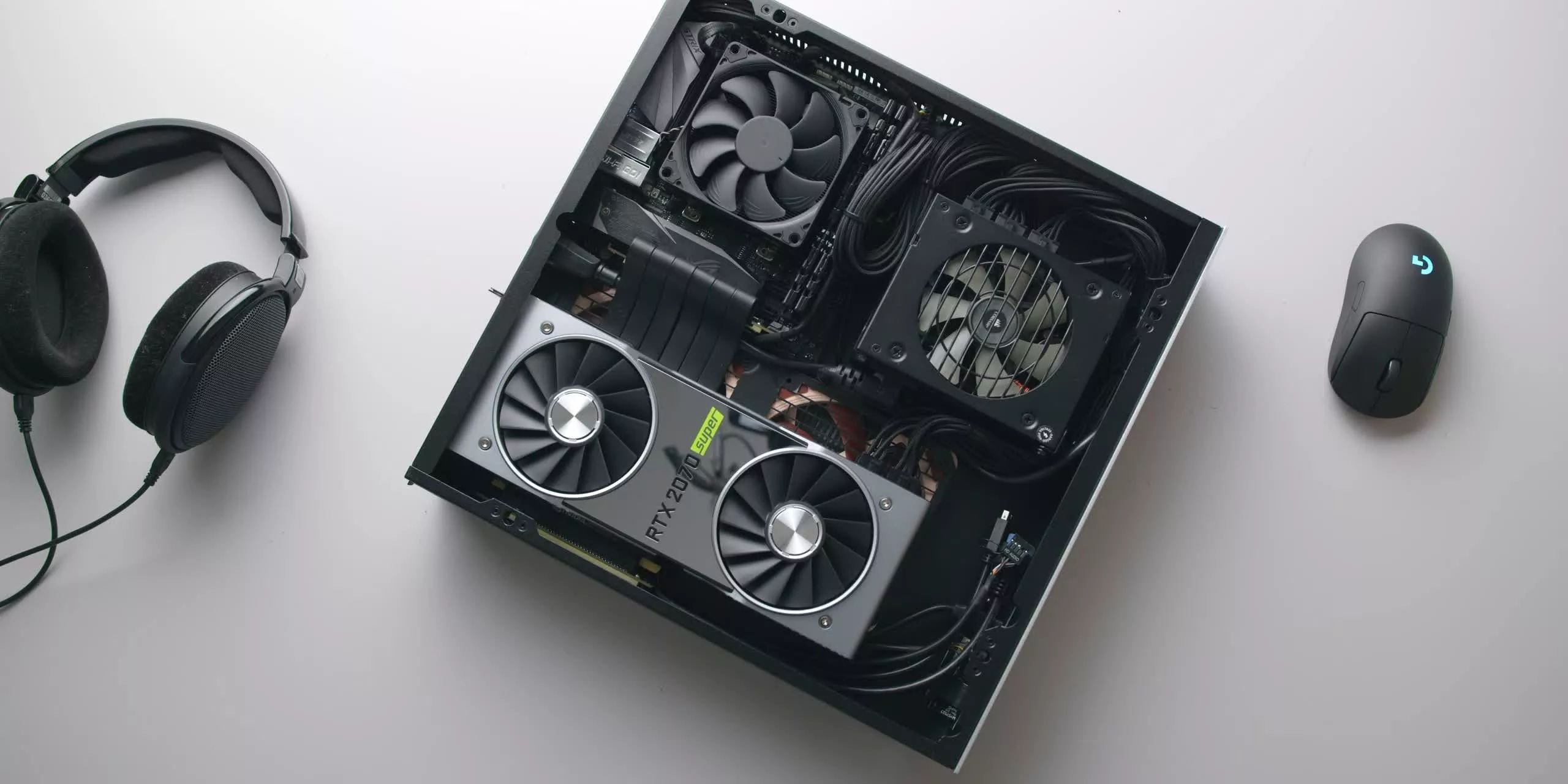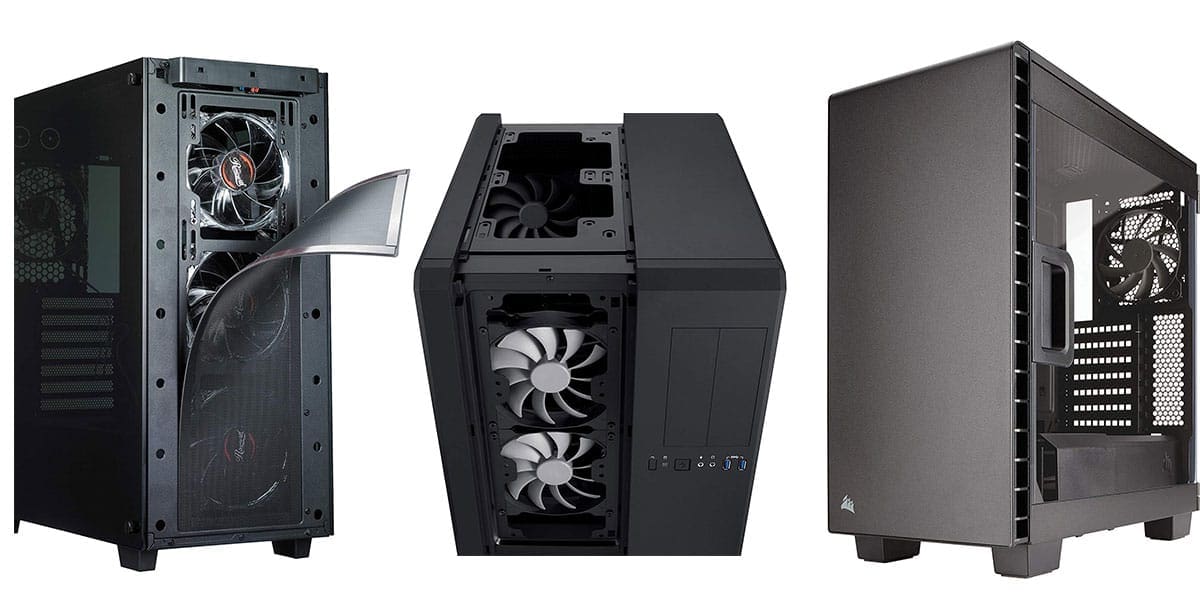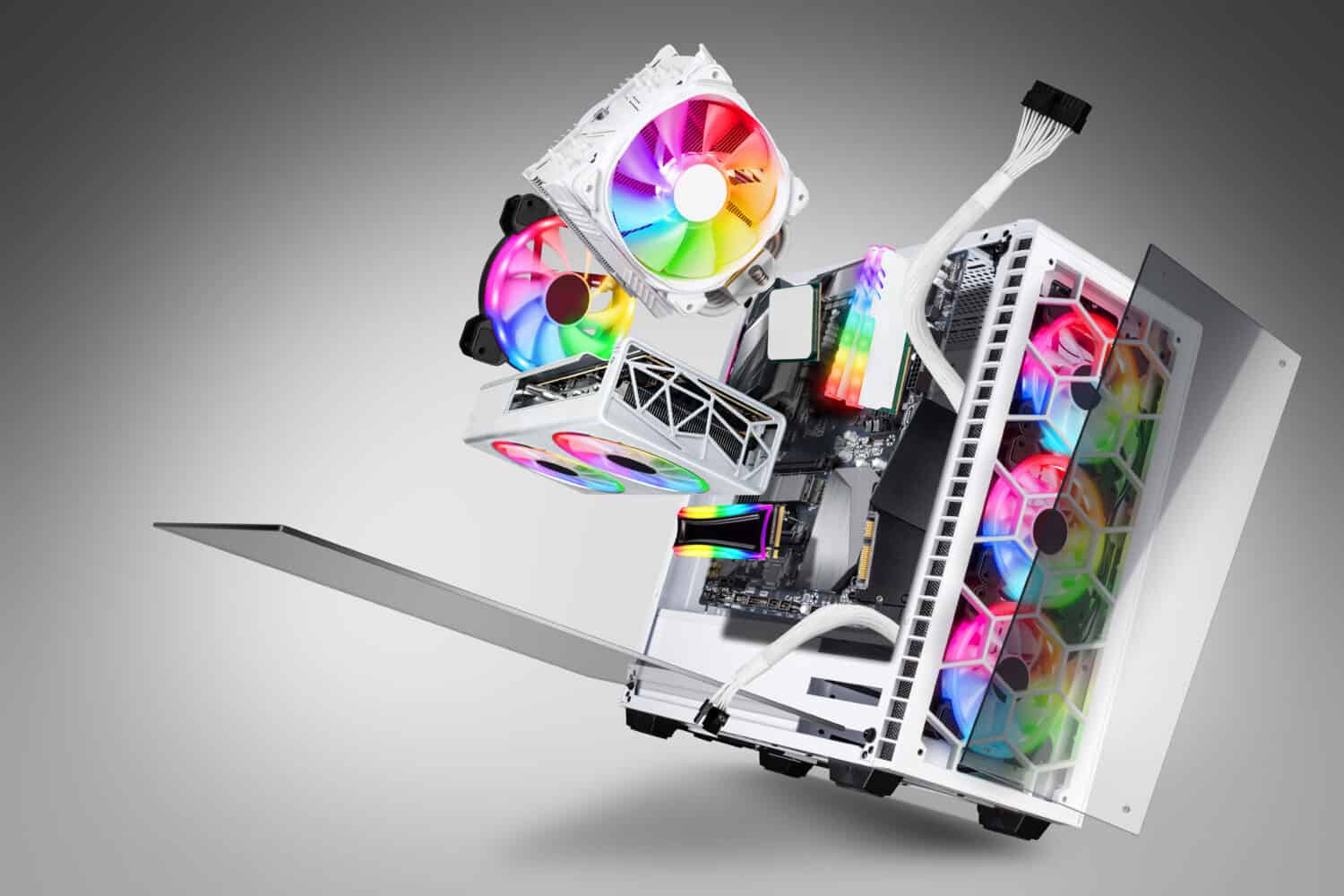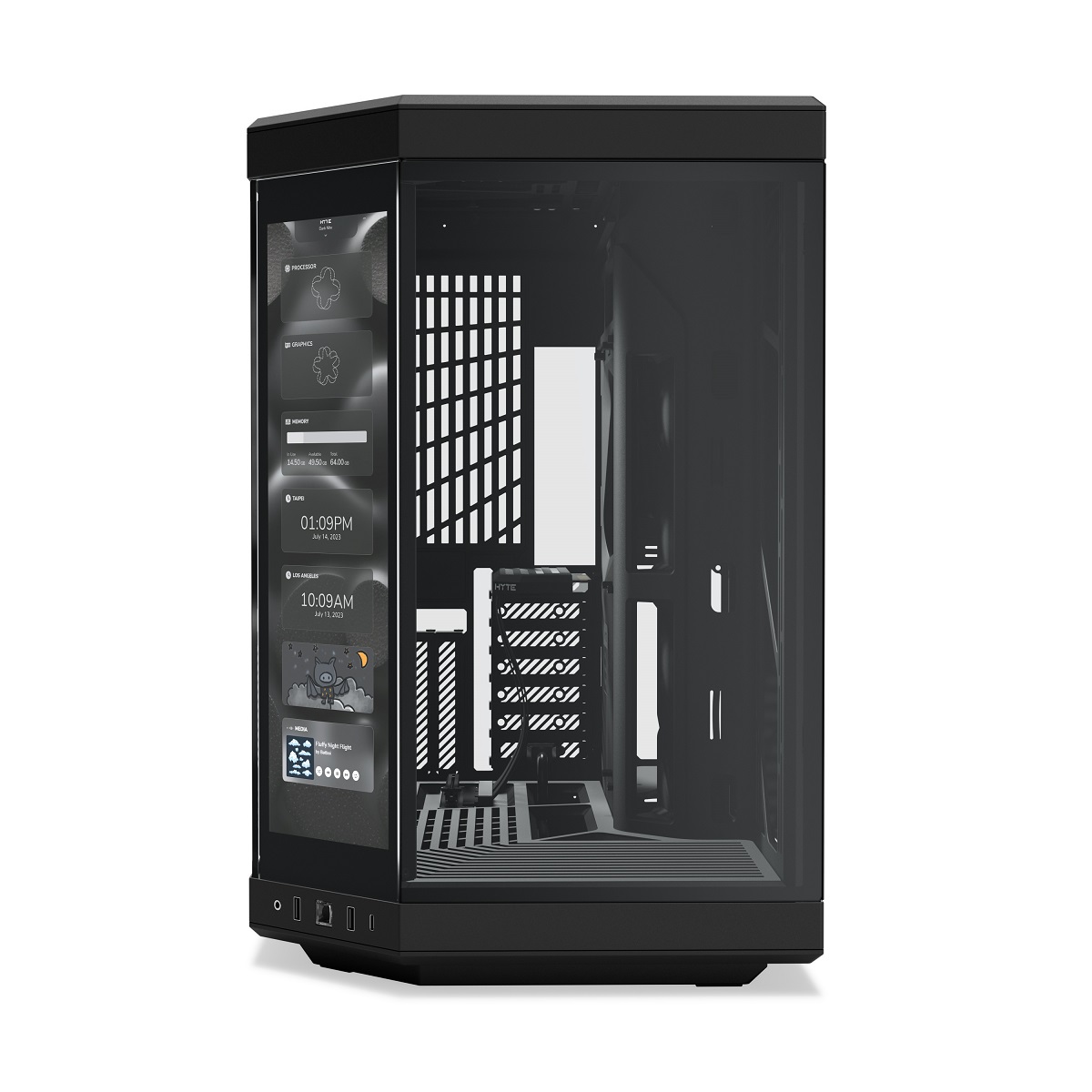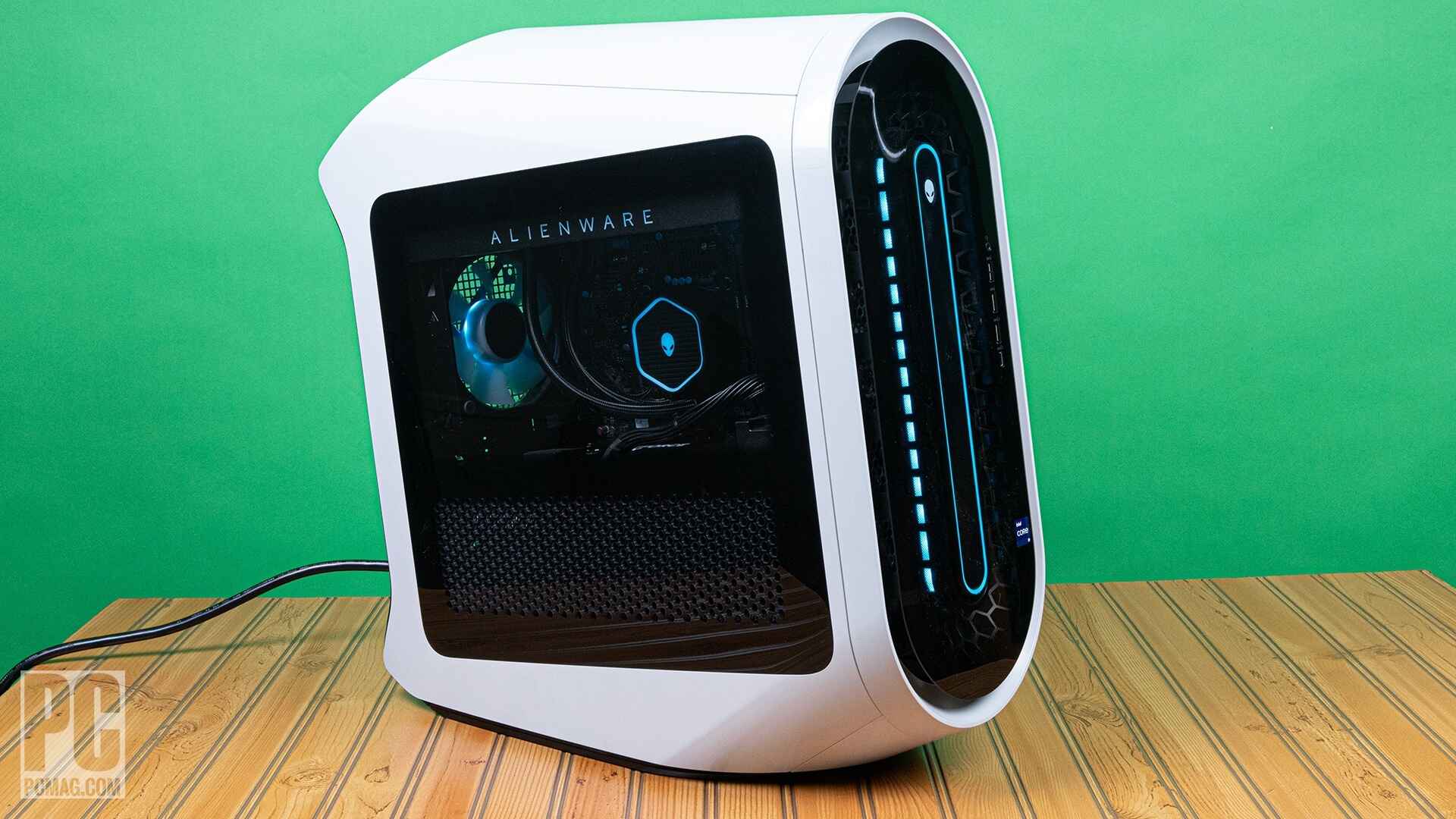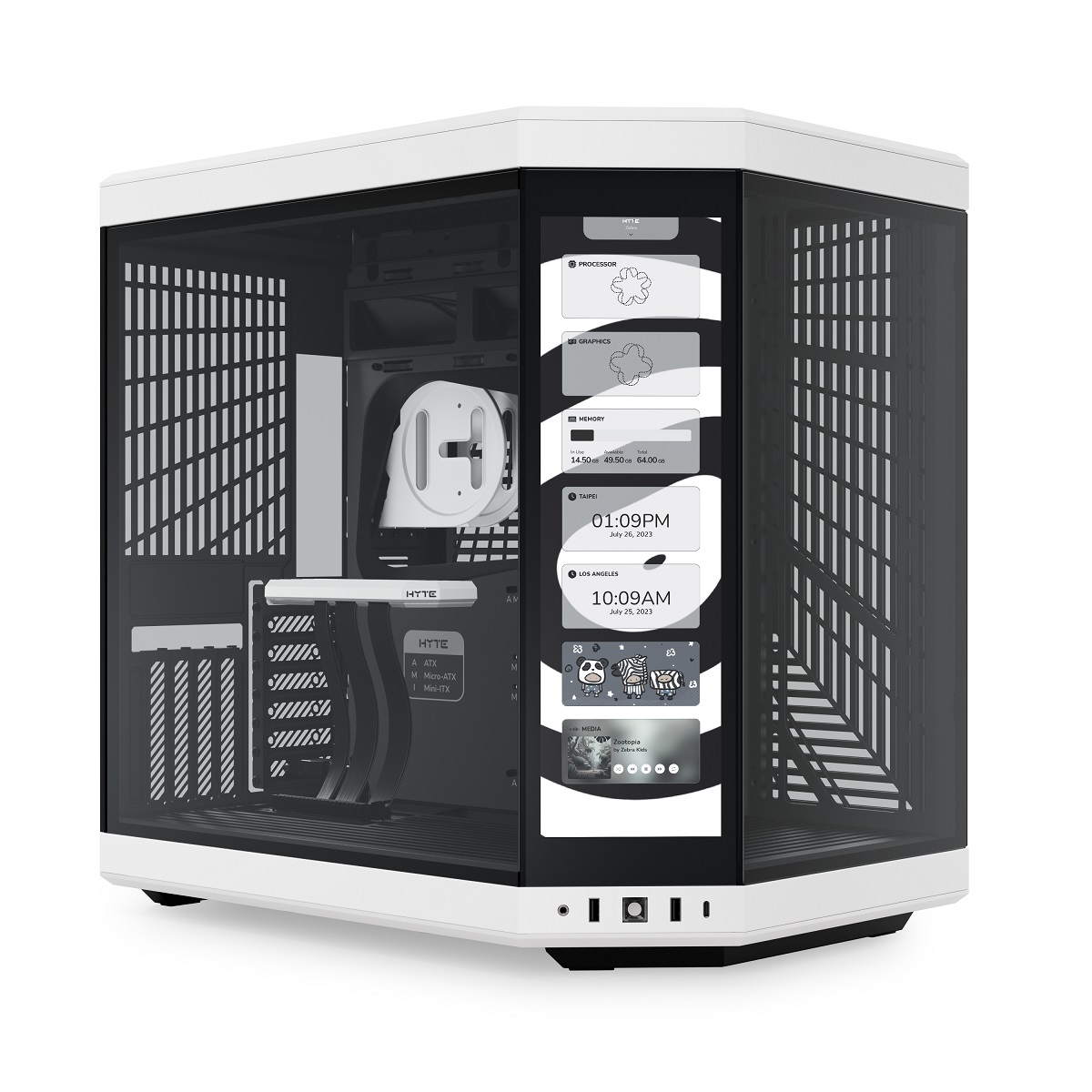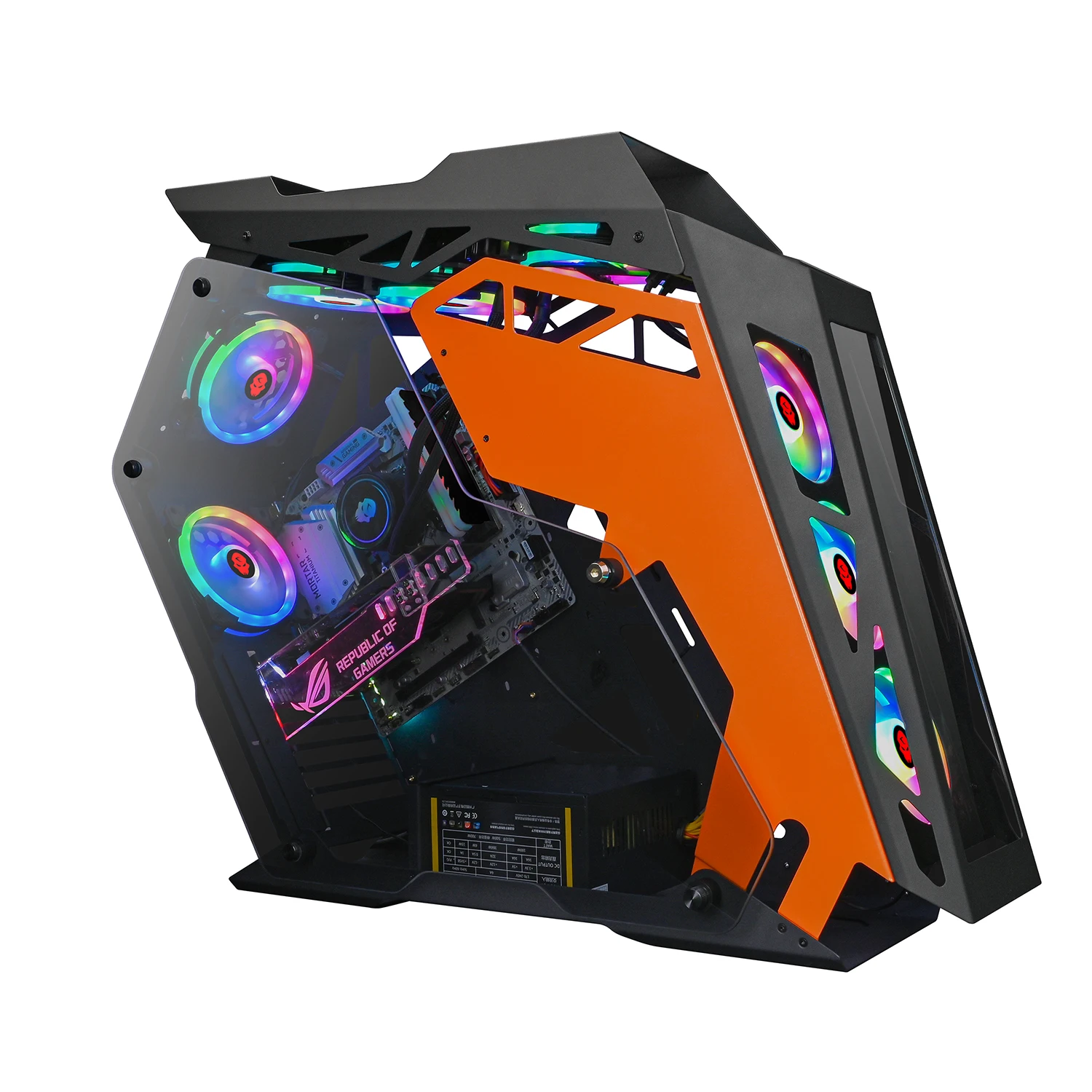Introduction
The ATX PC case is an essential component in building a personal computer. It serves as the enclosure that houses all the internal hardware components, providing them with protection, organization, and cooling support. Whether you’re a gaming enthusiast, a professional content creator, or simply someone who wants a powerful and reliable computer system, understanding what an ATX PC case is and its purpose is crucial.
An ATX PC case, or Advanced Technology eXtended PC case, refers to a specific form factor or size standard that defines the dimensions and layout of the case. It was developed by Intel in the 1990s to replace the older and bulkier AT (Advanced Technology) PC cases. The ATX standard introduced several improvements, including better airflow, easier installation of components, and support for advanced technologies.
The primary purpose of an ATX PC case is to house and protect the various hardware components that make up a computer system. These components include the motherboard, CPU (Central Processing Unit), RAM (Random Access Memory), storage drives, graphics card, power supply, and various other expansion cards. The case provides a secure and organized space to assemble these components, preventing damage from external elements and ensuring proper functioning.
Additionally, the ATX PC case is designed with cooling and airflow in mind. It incorporates fans, vents, and sometimes liquid cooling systems to dissipate heat generated by the components. This is crucial for maintaining optimal performance and preventing overheating, which can lead to component failure or reduced lifespan.
Furthermore, the ATX PC case also plays a role in noise reduction. Many modern cases are built with noise-dampening materials and features to minimize the sound produced by the system’s fans and other components. This is particularly important for those who work in quiet environments or have a preference for a noise-free computing experience.
Overall, the ATX PC case is a vital component that not only houses and protects the hardware but also contributes to the performance, cooling, and noise reduction aspects of a computer system. As technology advances, PC cases continue to evolve and offer more features and customization options to meet the varying needs of users. In the following sections, we will explore the different components, types, and factors to consider when choosing an ATX PC case to build your ideal computer system.
Definition of ATX PC Case
An ATX PC case, short for Advanced Technology eXtended PC case, is a type of computer enclosure that follows a specific form factor standard established by Intel. This form factor standard dictates the dimensions, layout, and features of the case, ensuring compatibility with various hardware components.
The ATX PC case is designed to house and protect the critical components of a computer system, including the motherboard, CPU, RAM, storage drives, graphics card, power supply, and expansion cards. It provides a secure and organized space for these components, allowing for easy installation, maintenance, and customizability.
The dimensions of an ATX PC case are standardized to accommodate the ATX motherboard form factor, which measures approximately 12 x 9.6 inches (305 x 244 mm). The case typically consists of a metal or plastic chassis with removable side panels for easy access to the internal components.
One of the defining features of an ATX PC case is its expansion slots, which allow for the installation of expansion cards such as graphics cards, sound cards, and networking cards. These expansion slots are positioned at the back of the case and provide connectivity options for additional functionality.
ATX PC cases are also designed with ventilation in mind to ensure adequate cooling of the components. They often incorporate fans, vents, and sometimes liquid cooling systems to dissipate heat effectively. Proper cooling is crucial for maintaining optimal performance and preventing thermal throttling, which can result in reduced performance or component failure.
Furthermore, ATX PC cases come with various external connectors and ports, such as USB ports, audio jacks, and power buttons, located on the front or top panel for easy access. These connectors allow for connectivity with peripherals and provide convenient control over the computer system.
In recent years, ATX PC cases have evolved to include additional features such as cable management systems, dust filters, RGB lighting, tempered glass side panels, and tool-free installation mechanisms. These features enhance the aesthetics, functionality, and ease of use of the case.
Overall, the ATX PC case serves as the foundation for a computer system, providing the necessary structure, compatibility, and protection for the internal components. It offers a range of options and features to cater to the needs of different users, whether they are building a high-performance gaming rig or a workstation for professional use. Understanding the definition and characteristics of an ATX PC case is essential for choosing the right case that best suits your needs.
Purpose of an ATX PC Case
The purpose of an ATX PC case is to provide a secure and organized enclosure for the various hardware components that make up a computer system. It serves several important functions that contribute to the overall performance, functionality, and longevity of the system.
One of the primary purposes of an ATX PC case is to protect the internal components from external elements and potential damage. The case acts as a shield against dust, debris, moisture, and accidental physical impact. By keeping the components enclosed, the case helps to minimize the risk of damage and prolong the lifespan of the hardware.
Moreover, an ATX PC case plays a crucial role in maintaining proper airflow and cooling for the components. It is designed with ventilation systems, including fans, vents, and sometimes liquid cooling options, to dissipate heat effectively. Good airflow prevents overheating, which can lead to performance issues, component degradation, and even system failure.
The case also helps to organize the internal components by providing designated slots, mounts, and cable management features. This organization not only ensures easy installation and maintenance of the components but also improves the overall aesthetics of the system. Proper cable management reduces clutter, improves airflow, and makes troubleshooting and upgrading much more convenient.
Another purpose of an ATX PC case is to provide expandability options. The case is designed to accommodate various expansion cards, such as graphics cards, sound cards, and networking cards, through its expansion slots. These slots allow for the integration of additional functionality and customization into the system.
Additionally, an ATX PC case serves as a platform for external connectivity. It typically features front or top panels with connectors and ports like USB ports, audio jacks, and power buttons. These external connections provide easy access to peripheral devices and allow for convenient control over the computer system.
Furthermore, the ATX PC case contributes to noise reduction. Many modern cases incorporate noise-dampening materials, optimized airflow, and fan control mechanisms to minimize the noise produced by the system’s components, ensuring a quieter computing experience.
Overall, the purpose of an ATX PC case is to offer protection, organization, cooling support, expandability, and connectivity for the internal components of a computer system. It plays a vital role in ensuring the optimal performance, functionality, and longevity of the system.
Components of an ATX PC Case
An ATX PC case consists of various components that work together to provide an enclosure for the hardware components and support the overall functionality of the computer system.
1. Chassis: The chassis forms the main structure of the ATX PC case. It is typically made from metal or plastic and provides the framework for supporting and securing the internal components. The chassis also includes removable side panels for easy access to the internal components during installation or maintenance.
2. Motherboard Tray: The motherboard tray is a key component that holds and secures the motherboard in place. It is positioned inside the case and features pre-drilled holes and standoff mounts to align with the mounting holes on the motherboard. The motherboard tray ensures a stable and secure connection between the motherboard and the case.
3. Drive Bays: Drive bays are slots or compartments designed to hold storage drives such as hard disk drives (HDDs) and solid-state drives (SSDs). They can be either 3.5-inch bays for HDDs or 2.5-inch bays for SSDs. Drive bays may be located internally or externally, depending on the case design. Some cases offer tool-less installation mechanisms for easy drive installation and removal.
4. Expansion Slots: Expansion slots are openings or slots found at the back of the PC case. They are designed to accommodate various expansion cards, such as graphics cards, sound cards, and networking cards. Expansion slots provide the necessary connectivity options and allow users to enhance the functionality of their systems by integrating additional hardware.
5. Power Supply Unit (PSU) Compartment: The PSU compartment is a dedicated space within the case where the power supply unit is installed. It typically features mounting brackets and cable management options to ensure proper installation and organization of power cables. The PSU compartment keeps the power supply unit separate from the other components, reducing potential heat and cable clutter.
6. Cooling System: The cooling system in an ATX PC case is essential for maintaining optimal temperature levels for the components. It usually includes fans, vents, and sometimes liquid cooling options. Fans are strategically placed to provide airflow and dissipate heat, while vents allow for the intake and exhaust of air. Liquid cooling systems, such as all-in-one or custom loops, provide enhanced cooling performance for overclocked systems or high-performance builds.
7. Front Panel Connectors: The front panel connectors are located on the front or top panel of the case and provide external connectivity options. These include USB ports, audio jacks for headphones and microphones, power and reset buttons, and LED indicators. The front panel connectors allow users to easily connect peripherals and control their system’s functions.
8. Cable Management Features: Cable management features such as routing holes, tie-down points, and Velcro straps are incorporated into the case design to facilitate efficient cable management. Proper cable management reduces clutter, improves airflow, and makes maintenance and hardware upgrades easier.
These are the key components found in an ATX PC case. Each component contributes to the overall functionality, organization, and protection of the internal hardware components. Understanding these components is essential for selecting a case that meets your needs and supports the hardware configuration of your computer system.
Types of ATX PC Cases
ATX PC cases come in various types and designs, each catering to different user preferences and needs. Understanding these types can help you choose a case that suits your specific requirements and desired aesthetic.
1. Mid-Tower Cases: Mid-tower cases are the most common type of ATX PC cases. They offer a good balance between size, expandability, and compatibility. Mid-tower cases provide ample space for all the necessary components, including multiple storage drives and expansion cards. They are suitable for most users, from gamers to content creators, who require a versatile case without sacrificing too much desk space.
2. Full-Tower Cases: Full-tower cases are larger and more spacious than mid-tower cases. They offer extensive room for expansion and accommodate advanced cooling options, such as multiple fans or liquid cooling radiators. Full-tower cases are ideal for enthusiasts who require maximum customization potential, have high-performance hardware configurations, or need space for extensive storage arrays.
3. Mini-ITX Cases: While Mini-ITX cases are not specifically designed for the ATX form factor, they deserve mention as they are popular for compact and portable builds. Mini-ITX cases support smaller motherboards, such as Mini-ITX or Micro-ATX. These cases are perfect for users who value space-saving solutions, such as gamers who require a LAN-party-friendly setup or those who want a compact HTPC (Home Theater PC) for their living room.
4. Cube Cases: Cube cases, also known as micro cases or cube-shaped cases, offer a unique and compact form factor. They are designed to maximize space efficiency while still providing sufficient room for hardware components. Cube cases can accommodate full-sized ATX motherboards or smaller form factors, depending on the specific model. They are an excellent option for users who want a compact build without compromising on functionality or aesthetics.
5. Open-Air Test Bench Cases: Open-air test bench cases are a specialized type of case designed for system testing and hardware benchmarking. In contrast to traditional cases, they lack side panels and often feature an open design to provide easy access to the components and ensure optimal airflow. These cases are popular among PC enthusiasts and overclockers who frequently test and experiment with their hardware.
6. Specialty Cases: In addition to the main types mentioned above, there are specialty cases available for specific purposes. These include gaming-oriented cases with RGB lighting and aggressive aesthetics, silent cases designed for noise reduction, and media center cases tailored for HTPCs. Specialty cases offer unique features and designs to cater to specific user needs or preferences.
It’s important to evaluate your requirements, budget, available space, and desired aesthetics before choosing the type of ATX PC case that best suits your needs. Each type offers its own advantages and considerations, so take the time to research and select the case that aligns with your vision for your computer system.
Factors to Consider When Choosing an ATX PC Case
When selecting an ATX PC case for your build, it’s important to consider several factors to ensure it meets your specific requirements. Here are some key factors to keep in mind:
1. Size and Form Factor: Consider the size and form factor of the case. Determine if you need a mid-tower, full-tower, or Mini-ITX case based on your desired hardware configuration, available space, and portability needs.
2. Internal Layout and Compatibility: Assess the internal layout and compatibility of the case. Ensure it can accommodate your chosen motherboard size, expansion cards, storage drives, and cooling solutions. Consider the number and configuration of drive bays, expansion slots, and fan mounts.
3. Cooling Options: Evaluate the cooling options available in the case. Look for adequate fan mounts or liquid cooling support to fit your desired cooling solution. Consider the airflow design, included fans, and the potential for adding additional fans or radiators.
4. Cable Management: Pay attention to cable management features within the case. Look for routing holes, tie-down points, and space behind the motherboard tray to facilitate neat and efficient cable management. Good cable management enhances airflow, eases maintenance, and improves the overall aesthetic of your build.
5. Expansion and Upgradability: Consider the potential for expansion and upgradability in the case. Evaluate the number of expansion slots, drive bays, and the ease of accessing and installing components. A case with ample room for additional hardware will provide flexibility for future upgrades.
6. Front Panel Connectors and Controls: Check the availability and positioning of front panel connectors and controls. Ensure the case provides the necessary ports and buttons, including USB, audio jacks, power, and reset buttons. The accessibility of these connectors plays a significant role in the ease of use and connectivity of your system.
7. Build Quality and Durability: Assess the build quality and durability of the case. Look for sturdy materials, solid construction, and reliable components. A well-built case will provide better protection for your components and ensure longevity.
8. Aesthetics and Personal Preference: Consider the aesthetics of the case, including its design, color, and any RGB lighting options. Select a case that aligns with your personal preference and complements the overall look of your setup.
9. Budget: Finally, consider your budget. Determine how much you are willing to invest in the case and find a balance between features, quality, and affordability. There are cases available at various price points, so choose one that offers the best value for your specific needs.
By evaluating these factors, you can select an ATX PC case that suits your requirements, provides proper hardware compatibility, and enhances the overall functionality and visual appeal of your computer system.
Benefits of Using an ATX PC Case
Using an ATX PC case for your computer system offers several benefits that contribute to the overall performance, functionality, and aesthetics of your build. Here are some key advantages of using an ATX PC case:
1. Hardware Protection: An ATX PC case provides a protective enclosure for your hardware components. It shields them from external elements such as dust, debris, and accidental physical damage, ensuring the longevity and reliability of your components.
2. Improved Airflow: ATX PC cases are designed with proper airflow in mind. They incorporate features such as fans, vents, and sometimes liquid cooling options to dissipate heat effectively. Good airflow improves the cooling performance of your system, preventing overheating and maintaining optimal performance.
3. Cable Management: ATX PC cases often include cable management features such as routing holes, tie-down points, and space behind the motherboard tray. These features help you organize and route the cables neatly, reducing clutter and improving airflow within the case. Proper cable management also makes hardware maintenance and upgrades easier and more convenient.
4. Expandability: ATX PC cases offer plenty of room for expansion. They provide multiple drive bays and expansion slots, allowing you to add more storage drives and expansion cards to your system as your needs grow. This expandability gives you the flexibility to upgrade and customize your system without needing to switch to a different case.
5. Easy Access and Maintenance: ATX PC cases typically have removable side panels, making it easy to access and maintain the internal components. This accessibility simplifies the installation and replacement of hardware, as well as the cleaning of the case internals. Easy maintenance ensures efficient operation and prolongs the lifespan of your components.
6. Aesthetics and Customization: ATX PC cases come in various designs, colors, and finishes, allowing you to choose one that suits your aesthetic preferences. Additionally, many cases feature RGB lighting options, tempered glass side panels, or customizable panels, enabling you to create a visually appealing and unique system that reflects your personal style.
7. Noise Reduction: Some ATX PC cases incorporate noise-dampening materials and optimized airflow design to minimize the noise produced by your system’s fans and components. This improves the overall acoustic experience, making your computer system quieter and more pleasant to use, particularly in noise-sensitive environments.
8. Versatility and Compatibility: ATX PC cases are widely compatible with various hardware components and configurations. They can accommodate both ATX and micro-ATX motherboards, a range of graphics card sizes, numerous storage drives, and other expansion cards. This versatility ensures compatibility with a wide array of PC builds and allows for future upgrades.
Overall, using an ATX PC case provides numerous benefits, including hardware protection, improved airflow, cable management, expandability, easy access and maintenance, customizable aesthetics, noise reduction, and compatibility. These benefits enhance the functionality, performance, and overall experience of your computer system.
How to Install Components in an ATX PC Case
Installing components in an ATX PC case requires careful consideration and proper technique to ensure a successful and efficient build. Here is a general step-by-step guide on how to install components in an ATX PC case:
1. Prepare the Work Area: Start by preparing a clean and well-lit work area. Ensure you have the necessary tools, such as screwdrivers and cable ties, readily available.
2. Place the Case on a Static-Free Surface: Position the ATX PC case on a static-free surface, such as an anti-static mat or a wooden table. This helps prevent damage to the sensitive electronic components.
3. Install the Power Supply Unit (PSU): Begin by installing the power supply unit in its designated compartment at the top or bottom of the case. Secure it using screws or brackets provided with the case. Connect the necessary power cables to the motherboard and other components.
4. Mount the Motherboard: Place the motherboard on the motherboard tray, aligning the mounting holes with the standoffs or screws on the tray. Fasten the motherboard securely using screws or standoff mounts. Ensure the motherboard is properly grounded by connecting the grounding wire or attaching it to the case.
5. Install the CPU, RAM, and CPU Cooler: Install the CPU on the motherboard socket according to the manufacturer’s instructions. Insert the RAM sticks into the appropriate slots, ensuring they are fully seated. If using an aftermarket CPU cooler, install it securely on the CPU socket, following the provided instructions.
6. Connect Storage Drives and Expansion Cards: Install the storage drives (HDD/SSD) in the dedicated drive bays, using screws or tool-less installation mechanisms if available. Insert the expansion cards, such as a graphics card or sound card, into the appropriate expansion slots on the motherboard.
7. Connect Cables and Wiring: Route the necessary cables, such as power cables and data cables, through the routing holes and cable management channels in the case. Connect these cables to their respective components, ensuring a secure and proper connection. Use cable ties to manage and secure the cables neatly, improving airflow and cable maintenance.
8. Install Case Fans or Cooling System: Install the case fans in the designated fan mounts or connect the cooling system, such as liquid cooling radiators or all-in-one (AIO) coolers, based on your cooling requirements and the case’s capabilities. Ensure the fans or cooling system is correctly oriented for optimal airflow.
9. Secure and Close the Case: Once all the components are installed and connected, double-check the connections, cable routing, and component alignment. Ensure that there are no loose screws or cables obstructing the cooling system. Secure the side panels of the case using the provided screws or latches.
10. Power On and Test the System: Connect the power cable to the PSU and turn on the system. Confirm that all the components are functioning correctly and that the fans and cooler are operational. Check the BIOS settings and perform any necessary configurations according to your needs.
Following these general steps should help you install components in an ATX PC case correctly. However, it is crucial to refer to the user manuals and instructions provided with your specific components and case for precise installation guidelines.
Tips for Proper Cable Management in an ATX PC Case
Proper cable management in an ATX PC case not only improves the aesthetics of your build but also contributes to better airflow, easier maintenance, and improved overall system reliability. Here are some tips to help you achieve effective cable management:
1. Plan Ahead: Before you start connecting cables, plan the routing of each cable. Take into account the length of the cables, the locations of components, and the available cable management features within the case. Planning ahead will help you avoid messy cable tangles and make your cable management efforts more efficient.
2. Use Cable Ties: Cable ties are essential for securing and organizing cables. Use them to bundle cables together, creating neat and manageable cable groups. Make sure not to overtighten the ties, as it can cause damage to the cables. Additionally, leave some slack in the cables to allow for future adjustments and component upgrades.
3. Utilize Cable Management Channels: Most ATX PC cases come with dedicated cable management channels or routing holes. Take advantage of these features to guide cables along designated paths and keep them organized. Route cables behind the motherboard tray whenever possible to keep the main chamber of the case clutter-free.
4. Group Similar Cables: Grouping similar cables, such as power cables or data cables, together can help keep them organized and prevent them from tangling. Use cable ties or Velcro straps to bind these groups of cables and ensure a clean and tidy appearance.
5. Route Cables Strategically: Route cables strategically to ensure they do not obstruct airflow or interfere with other components. Keep power cables away from sensitive audio or data cables to minimize interference. If using liquid cooling, route tubing and cables away from other components to prevent possible leaks or damage.
6. Use Cable Management Accessories: Consider using additional cable management accessories such as cable combs, sleeves, or clips to improve the overall appearance and organization of your cables. These accessories can help keep cables aligned and prevent them from dangling or blocking components.
7. Consider Modular Power Supplies: Modular power supplies have detachable cables, allowing you to connect only the cables you need. This helps minimize cable clutter and allows for more efficient cable management. It is particularly beneficial for smaller cases or builds with limited space.
8. Test and Revisit: Once you have connected all the cables, test the system to ensure it functions properly. Take the opportunity to review your cable management and make any necessary adjustments. Sometimes, changes during the build process may require you to revisit and further optimize cable routing.
Remember that effective cable management is an ongoing process. As you upgrade or modify your system, take the time to reevaluate and adjust your cable management strategy accordingly. By dedicating effort to proper cable management, you will not only improve the appearance of your build but also enhance the airflow and maintain a tidy and organized computer system.
Maintenance and Cleaning of an ATX PC Case
Maintaining a clean and well-maintained ATX PC case is essential for the longevity and optimal performance of your computer system. Regular maintenance and cleaning help prevent dust buildup, improve airflow, and ensure the components function efficiently. Here are some tips for maintaining and cleaning your ATX PC case:
1. Unplug and Ground Yourself: Before performing any maintenance or cleaning tasks, ensure your computer system is completely powered off and unplugged from the electrical outlet. Additionally, ground yourself by touching a grounded metal object to discharge any static electricity that could potentially damage sensitive components.
2. Dusting: Dust is the most common enemy of computer components. Use compressed air or a handheld air blower to remove dust from the case interior, fan blades, vents, and other components. Hold the can or blower upright, and use short bursts of air to dislodge the dust. Pay particular attention to the heatsinks, fans, and filters.
3. Cleaning the Filters: Many ATX PC cases are equipped with dust filters to trap and collect dust particles. These filters should be cleaned periodically. Refer to the case manual for the filter removal method, which may involve sliding or unlatching mechanisms. Gently rinse the filters with water, allow them to dry fully, and reattach them to the case.
4. Wiping the Case Exterior: Use a soft microfiber cloth or an antistatic cleaning wipe to wipe down the external surfaces of the case. Avoid using harsh chemicals or abrasive materials that may damage the case finish. Focus on areas that are prone to fingerprints or smudges, such as the front panel or side panels.
5. Cleaning the Glass Panels: If your case has tempered glass panels, use a glass cleaner and a soft cloth to remove fingerprints and smudges. Spray the cleaner onto the cloth, not directly onto the glass, to prevent liquid from seeping into the case. Gently wipe the glass in a circular motion until it is clean and clear.
6. Cable Management Check: While cleaning the case, take the opportunity to ensure that your cable management is still neat and organized. Check for any loose cables or cables obstructing airflow and make necessary adjustments to keep them secured and out of the way.
7. Component Check: Periodically check the hardware components, such as fans, for any signs of wear or malfunction. Make sure all connections are secure and consider cleaning the fan blades if they are clogged with dust. Replace or repair any components that show signs of damage or degradation.
8. Regular Maintenance Schedule: Establish a regular maintenance schedule to keep your ATX PC case clean and well-maintained. Frequency of cleaning depends on various factors, such as the environment in which your computer operates and the level of dust accumulation. Typically, it is recommended to clean the case every 3-6 months or as needed.
By following these maintenance and cleaning tips, you can ensure that your ATX PC case remains free from dust, optimally cooled, and visually appealing. Regular maintenance will extend the lifespan of your components and contribute to a reliable and efficient computer system.
Conclusion
Choosing the right ATX PC case for your computer system is crucial for optimal performance, functionality, and aesthetics. Understanding the definition, components, and types of ATX PC cases helps you make informed decisions during the selection process.
An ATX PC case serves as an enclosure, protecting and organizing the internal hardware components. It promotes proper airflow for cooling, ensures cable management, and provides expandability options. The size and form factor of the case, along with its internal layout and compatibility, play important roles in determining its suitability for your build.
Consideration of factors such as cooling options, cable management, expansion and upgradability, aesthetics, and budget helps you find a case that meets your specific needs and preferences. Proper cable management ensures efficient airflow, easier maintenance, and an aesthetically pleasing build.
Maintaining and cleaning your ATX PC case on a regular basis helps prevent dust buildup, improves cooling efficiency, and prolongs the lifespan of your components. Simple practices such as dusting the case interior, cleaning filters, wiping down the exterior, and performing routine hardware checks contribute to the overall maintenance of your system.
In conclusion, selecting an ATX PC case, installing components correctly, practicing proper cable management, and maintaining the case ensures an optimal and reliable computer system. By considering the various factors and utilizing the tips provided, you will be well-equipped to make informed choices and enjoy a successful PC building experience.







